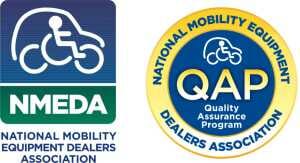There are many reasons why an individual might require a driving evaluation, however before we address the reasons why, lets review what exactly is a driver evaluation.
WHAT IS A DRIVER EVALUATION?
A driver evaluation is a comprehensive set of physical and/or cognitive assessments, performed by a Certified Driving Rehabilitation Specialist (CDRS). The assessment is designed to evaluate an individual’s cognitive and/or physical limitation related to safely operating a motor vehicle.
WHO CAN BENEFIT FROM AN EVALUATION?
• Any individual that has a physical and/or cognitive limitation or impairment that is interested in regaining their independence by operating a motor vehicle.
• Any person where a physician or family member has questioned an individual’s ability to safely operate a motor vehicle.
WHAT CRITERIA IS USED IN THE EVALUATION PROCESS?
When undergoing a driving evaluation, the following skills are addressed and performance must be deemed acceptable by a CDRS.
• Physical Function – Range of motion, strength, coordination, endurance and sensation.
• Vision – Visual acuity, depth perception, contrast sensitivity, peripheral and color recognition.
• Cognition – Attention, judgment, memory, spatial, perception, problem solving.
• Reaction Time – Ability to respond timely and accurately with regards to driving tasks.
• Self Control – Ability to modulate oneself in response to demands in the environment.
WHAT IS THE PROCESS ORDER OF AN EVALUATION?
A driver evaluation usually consists of the following steps and can last 2 to 3 hours. However, each case being unique results in a variance of time allotted.
• Clinical – Portion of evaluation consists of a variety of screening tools, assessments and standardized tests of skill related to physical, cognitive, visual and reaction time.
• Behind the Wheel – Portion of evaluation assesses the clients’ abilities to control the vehicle over various road situations. This step is only performed if the client demonstrated the necessary physical, visual, cognitive and reaction times during the clinical assessment. Use of adaptive equipment will be used and introduced if deemed necessary from the clinical evaluation. Client must have previous drivers license or permit to participate in this part of the evaluation.
• Results/Outcomes – Summary is provided of the evaluation and will detail the clients’ abilities with list of recommendations.
• Equipment Prescription – If warranted, a written prescription that includes the recommendation of adaptive equipment is provided, and referral to an appropriate vendor/vehicle modifier is made.
• Fitting and Inspection – After the vendor modification / Install, a final fitting is conducted to ensure that the prescribed equipment or modification is positioned properly and adjustments are made.
• Driver Rehabilitation Training – If necessary, training begins in the operation of modification / installation of equipment. The duration of this training is determined by the therapist and will vary based on clients needs.
WHAT TYPE OF MODIFICATION/EQUIPMENT MIGHT I BE PRESCRIBED?
Obviously, everyone’s needs and situation are different; however the most popular vehicle modifications and installation of adaptive equipment are as follows:
• Lowered floor, wheelchair accessible van
• Wheelchair or scooter lift
• Hand controls
• Transfer seat
• High tech, electronic driving systems
• Wheelchair restraints
• Docking systems
DOES INSURANCE PAY FOR THE EVALUATION?
Unfortunately, these services are not often covered by insurance plans. Please make sure you check with your insurance provider to determine your exact coverage.
DOES INSURANCE PAY FOR THE MODIFICATION / INSTALLATION OF ADAPTIVE EQUIPMENT?
Most insurance companies do not cover the modification / installation of adaptive equipment, however there are many sources that do provide assistance, and you might qualify. To see if you qualify, you should research the following services for assistance availability as they are the most common:
• Vocational Rehabilitation Services (for your state)
• Workers Compensation (if qualify and applicable to your situation)
• Veteran Administration (if qualify and applicable to your situation)
• Insurance Provider
• Medical Assistance Programs
As you can see, a driver evaluation is not only very important, but it is a process. A process that is best started as soon as possible in a situation where time is an essence on regaining mobility.
If you think you might be a candidate or just interested in learning more about driver evaluations, please DO YOUR RESEARCH and contact a CDRS in your area. Most rehabilitation facilities will have a list of CDRS in your area and can provide contact information to you. We also work with numerous CDRS in Indiana, Kentucky, Ohio, Illinois, Tennessee, Nebraska, Iowa, Arkansas, Alabama, Florida and Louisiana, so feel free to contact any one of the, Superior Van and Mobility locations in those markets.



